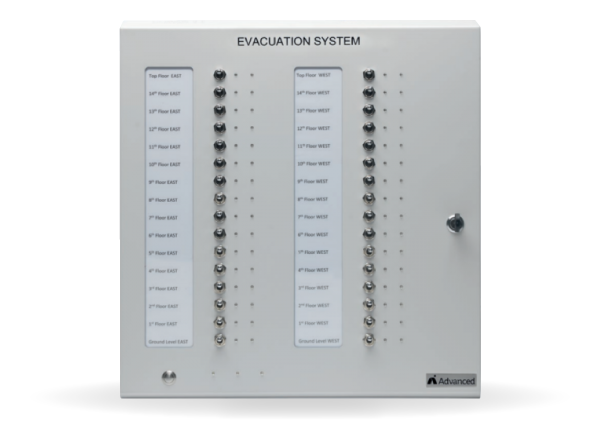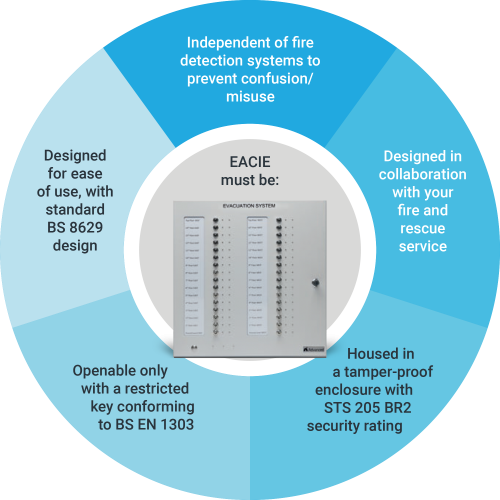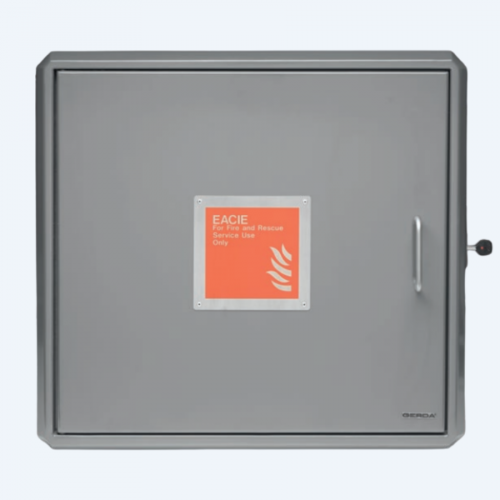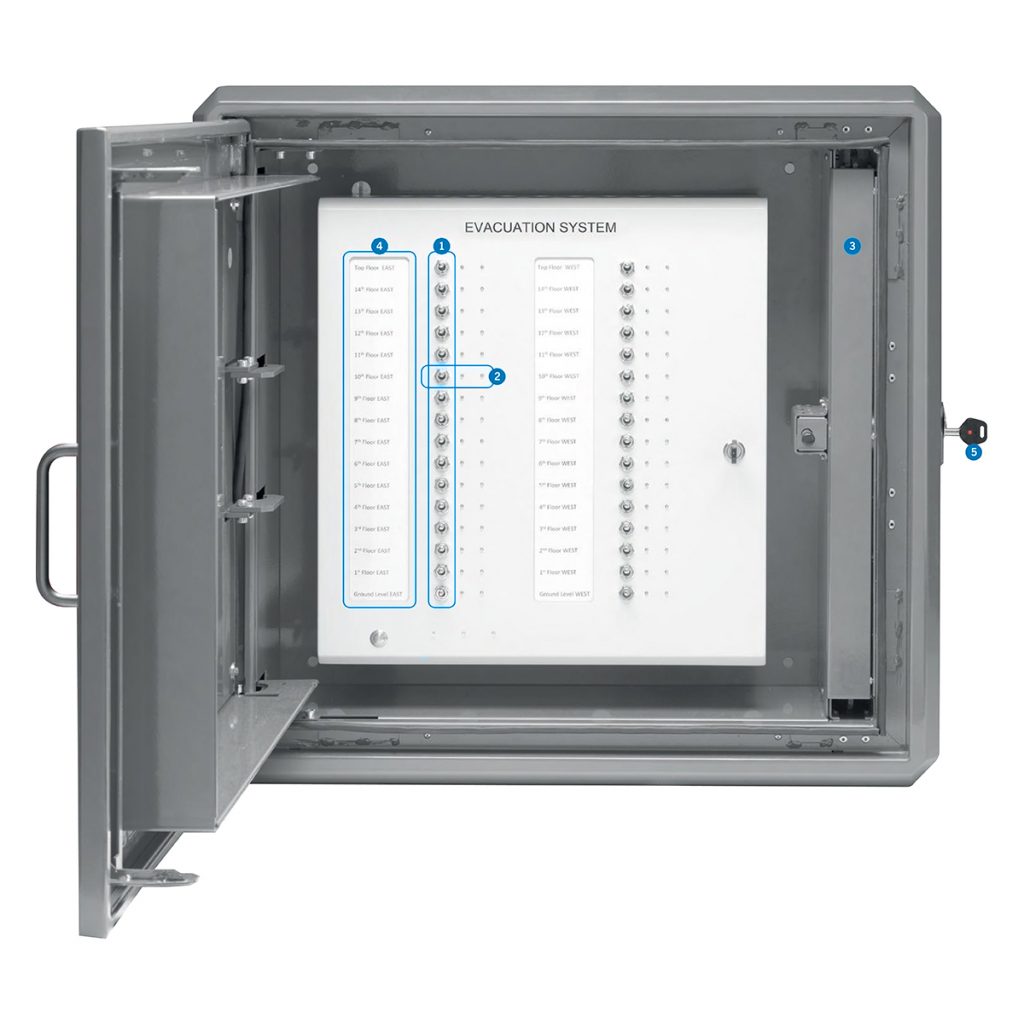Evacuation Alert Systems
Brought to you by fDS Contracting
The successful and safe evacuation of occupants is essential during a fire.
The FDS Evacuation System is an essential part of any fire safety strategy for residential buildings to allow the Fire Brigade to evacuate occupants in a controlled and safe manner.

FDS Evacuation Alert System
Evacuation Alert Systems are operated by the fire and rescue service via a control panel that triggers evacuation alerts inside each apartment for specific areas or floors.
In compliance with BS 8629, an alarm sounder is required to be positioned in each flat in a block and must be fitted with an alarm sounder and audible alerts resulting in controlled evacuation by the Fire Brigade.
The system quickly alerts occupants to the threat of danger with heightened visual and audible alerts resulting in evacuation times being quicker.
Compliance
As of December 2022, a requirement of ADB is that in new blocks of flats over 18 meters high, the implementation of an evacuation alert system is recommended, stating that:
This code of practice is strongly advised for new buildings containing flats and are equally relevant as best practice for existing buildings too.
“In blocks of flats with a top storey over 18m above ground level, an evacuation alert system should be provided in accordance with BS 8629.”
Why is this?
In incidents where widespread evacuation is necessary, having an evacuation alert system in place enables resources to focus on critical firefighting operations. Moreover, a swifter evacuation ensures the safety of residents.
What is BS 8629 and why is it important?
BS 89629 is the British Standards Institution code of practice for ‘the design, installation, commissioning, and maintenance of evacuation alert systems for use by fire and rescue services in buildings containing flats’.
BS 8629 was initially developed as part of a review of Scottish building standards in 2017.
The recommendations for the implementation of BS8629 had quickly come into place following the tragic Grenfell Tower incident in June 2017.
Use the free flowchart to see if you need an Evacuation Alert System!

Key Points Of BS 8629
The code of practice recommends the installation of EACIE (Evacuation Alert Control and Indicating Equipment) which should be independent of fire detection systems and designed to support any evacuation strategy chosen by the fire and rescue service.
The EACIE must be housed in a tamper-proof enclosure, and access must be restricted to fire and rescue service use only by means of a specialist key.
Features and Benefits
- Modular circulation
- Customisable on site when required
- Fully expandable from 1 to 4 loops
- Supplied with 8, 16, 24 or 32 fire fighter evacuation alert areas as standard
- Control panel with the latest dual flash-based microprocessor technology
- Robust steel enclosure
- Suitable for a wide range of site applications
- Virtual screen for simple use of ease and remote programming and servicing
- Fully programmable on site
- Three-year warranty
- Inner box contains a space for backup batteries
- Maximum battery size of 2×17 Ah
- Protected access by fire and rescue service
- ‘EACIE: For Fire and Rescue Service Use Only’ sign fixed to cabinet door
- Lock cylinder compliant to BS EN 1303

Benefits of the Advanced Evacuation Alert System
Toggle switches are easy for fire and rescue service personnel to operate.
Toggle switches plus LED indication make it easy for the fire and rescue service to view evacuation zone status and implement evacuation strategies quickly and easily.
Evacuation alert panel is housed in its own security-rated enclosure to prevent malicious damage.

1 to 4 loop formats supporting 500 mA per loop for total flexibility.
Built-in battery back-up options – up to 17 ampere-hours, to meet the BS 8629 code of practice recommendations.
Wired, wireless or hybrid system solutions available for maximum versatility.
Commissioning and servicing are quick and easy using our virtual PC tool.
Speak to one of our experts today
